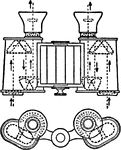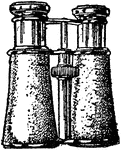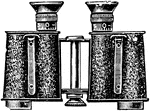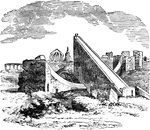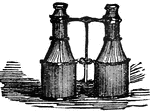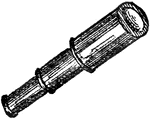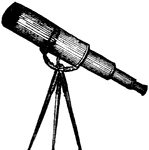Telescopes and Binoculars
The Telescopes and Binoculars ClipArt gallery offers 35 illustrations of devices used to make distant object appear closer to the viewer.

Binocular Telescope
Binocular telescopes, or binoculars (also known as field glasses), are two identical or mirror-symmetrical…
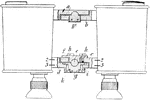
Double Telescope Binocular
An optical device, such as a pair of field glasses or opera glasses, designed for simultaneous use by…
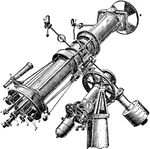
Micrometer
"The circles for position angle and declination are read by micrometer microscopes illuminated by the…
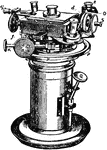
Repsolds Micrometer in Cape Observatory
A Repsolds micrometer used by Cape Observatory. The large micrometer is used to accurately adjust the…
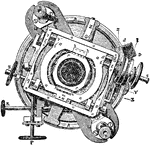
Repsolds Micrometer with Removed Box Cape Observatory
A micrometer with the box removed from Cape Observatory. The device rotates the telescope accurately…
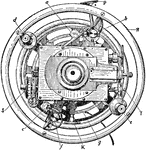
Repsolds Spider Line Micrometer for Quick Position Angle Motion
"Repsolds' more recent form of the spider—line micrometer (since 1893) for large telescope. Quick…

Observatory
"The observatory. This view is from the field, looking north. On the left is seen the winding Schuylkill,…

Opera Glass
Opera glasses, also known as theater binoculars or Galilean binoculars, they are compact, low power…
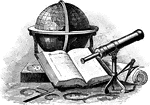
Still Life with Globe and Telescope
Still life arrangement including a globe, telescope, book, right angle, rolled map, and dividers.
Telescope
"A telescope is an instrument designed for the observation of distant objects, and consists essentially…

Telescope
"The eye-end of a telescope. The reader will recognize the micrometer previously described. L is a paraffin…
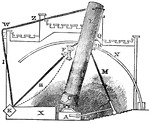
Telescope
"The following description of a section of Lord Rosse's telescope, though not so perfect as could be…
!["These telescopes were all reflectors; that is, instead of looking up at a star through a tube with a glass in the upper end [Herschel] would look down into the tube away from the star and see its reflecting in a concave mirror at the lower end of the tube."—The Foundation Library, 1911](https://etc.usf.edu/clipart/79400/79403/79403_telescope_mth.gif)
A Great Reflecting Telescope
"These telescopes were all reflectors; that is, instead of looking up at a star through a tube with…

Repsolds Micrometer Box for Telescope Cape Observatory
"The micrometer box, and of course with it the whole system of spider webs, is moved by the screw s,…
Double Refracting Telescope
"The inversion of the object is of little consequence when the instrument is employed for astronomical…
Galilean Telescope
"The Galilean telescope has a double-concave eye-lens that intercepts the rays before they reach the…
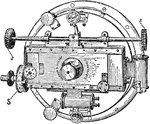
Repsolds Micrometer Box for Yerkes Telescope
A Repsolds micrometer box for Yerkes Telescope. The wheels on the sides adjusts the telescope sideways,…
Reflecting Telescope
"The reflecting telescope has an objective a concave mirror, tecnically called a speculum. The images…
Refracting Telescope
"The most simple refracting telescope consists of a tube, containing two convex lenses, the one having…
Refracting Telescope
"Suppose a, to be a distinct object, from which pencils of rays flow from every point toward the object…
Refracting Telescope
"Suppose the object o to be at such a distance, that the rays of light from it pass in parallel lines,…
Terrestrial Telescope
"The spy-glass or terrestrial telescope avoids the inversion of the image by the interposition of two…

Zenith Telescope
Zenith telescope constructed at the International Stations at Berlin by Hermann Wanschaff.

Transit Instrument
"One of the most important of astronomical instruments, consists of a telescope fixed to a horizontal…
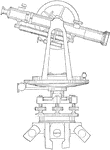
Transit Telescope
A transit telescope is a special purpose telescope mounted so as to allow it to be pointed only at objects…

Zenith Telescope
"The instrument is supported on a strong tripod, fitted with levelling screws; to this tripod is fixed…

